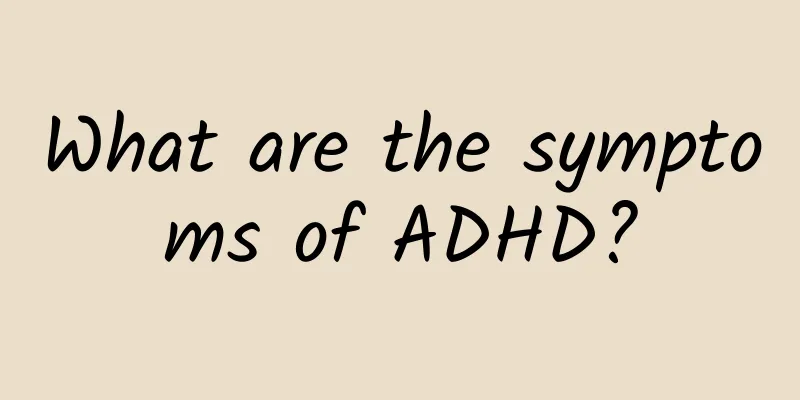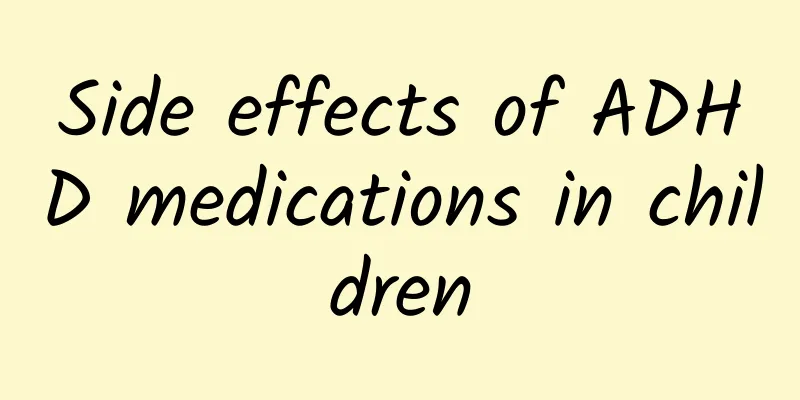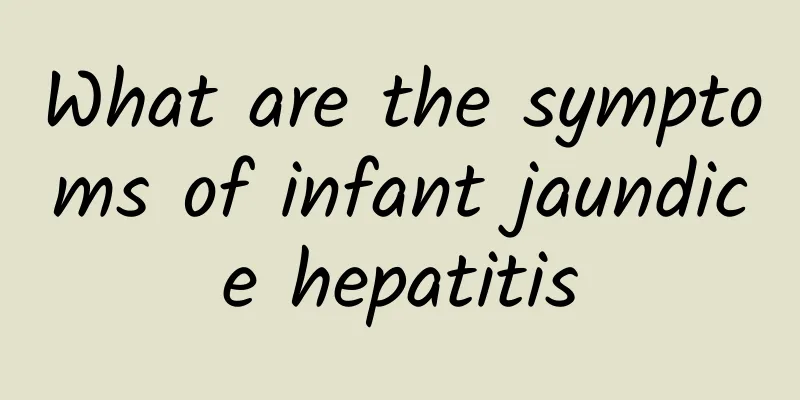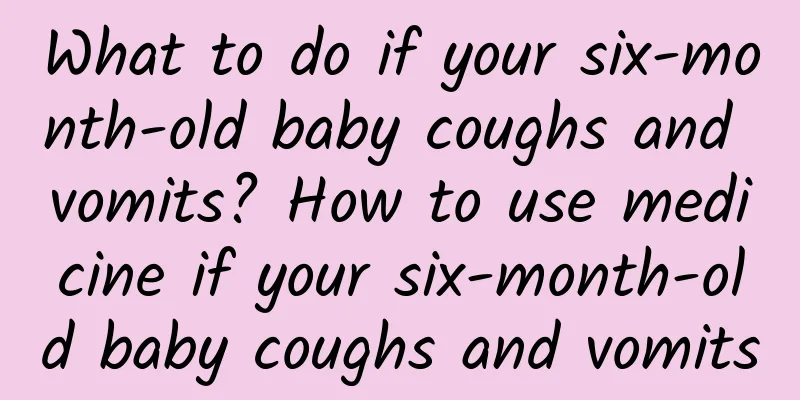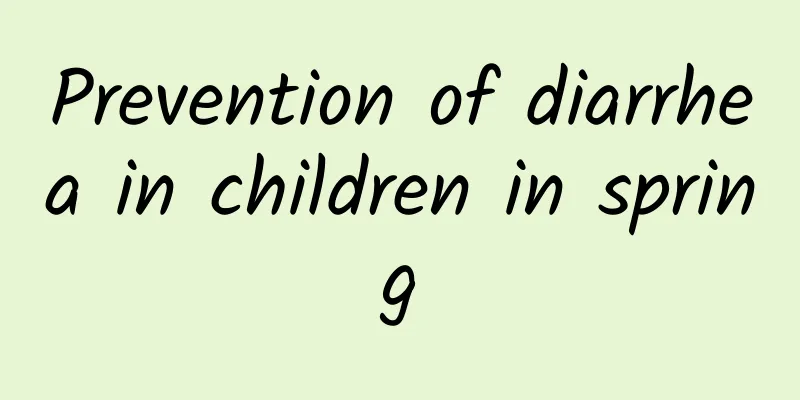What are the preventive measures for hand, foot and mouth disease? What are the causes of hand, foot and mouth disease?
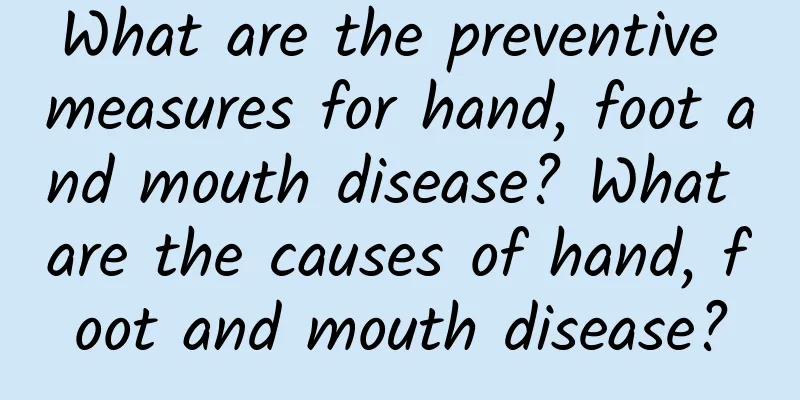
|
Hand, foot and mouth disease is related to seasonal infection. There are different changes in different seasons. Now spring is an important period for the spread of the disease. Hand, foot and mouth disease begins to spread at this time. It often occurs in children under the age of six. Because children under the age of six have low body resistance and their ability to prevent viruses has not yet fully matured, they are most susceptible to virus transmission at this time. The complications of hand, foot and mouth disease also include encephalitis, fever, and brain nerve spasms. Severe cases can affect life safety. Hand, foot and mouth disease should be prevented and cared for in normal times. When multiple small herpes appear on the palms and mouths of children at the same time, and they are very itchy and accompanied by fever, you should go to the hospital to check whether you have hand, foot and mouth disease. Prevention measures for hand, foot and mouth disease: In the season or area where hand, foot and mouth disease is prevalent, try to avoid crowded public places. There is currently no specific vaccine for prevention (the domestic hand, foot and mouth vaccine has completed phase III clinical trials). There are more than 20 types of enterovirus known to cause hand, foot and mouth disease in the world, and there is no cross-immunity between the types (if you have had hand, foot and mouth disease, you are only immune to the virus that you have been infected with). Isolate the source of infection: The patient should be isolated for no less than two weeks after the onset of the disease, or one week after the symptoms disappear. Cut off the transmission route: In epidemic seasons and areas, "frequent ventilation, frequent hand washing, frequent disinfection, eating cooked food, and controlling infection" are the key. Finally, even if the child is infected with hand, foot and mouth disease, parents should not panic, because most of them are mild, as long as the child's general condition is good, it will be fine. Generally, it will be fine in about a week, but if the child has symptoms such as poor spirits, drowsiness, vomiting, easy to be startled, headache, high fever, etc., it is necessary to see a doctor. First of all, hand, foot and mouth disease is not terrible. Only by understanding the transmission method of hand, foot and mouth disease can we more effectively prevent and control the disease. Hand, foot and mouth disease is caused by multiple (types) of enterovirus. Of course, not all enteroviruses can cause hand, foot and mouth disease. At present, there are more than 20 (types) of enteroviruses reported worldwide that cause hand, foot and mouth disease, among which Coxsackievirus A16 (CoxA16) and enterovirus 71 (EV71) are the most common. In my country, CoxA16 is the main cause, and EV71 is rare. Hand, foot and mouth disease caused by Coxsackievirus and EV71 cannot be distinguished in appearance, but EV71 has a greater chance of complications or severe illness of hand, foot and mouth disease than the former. Children with hand, foot and mouth disease and asymptomatic carriers are the main sources of infection: patients' skin rashes or blisters, oral secretions, feces, etc. often carry a large number of viruses. The first week of onset is the most contagious. Asymptomatic carriers play an important role in the outbreak of hand, foot and mouth disease. These people (latent or overt infection) do not show corresponding symptoms and will not attract the attention of the public and doctors, but they contain a large number of enteroviruses that can cause hand, foot and mouth disease, which can easily spread to healthy susceptible people. For example, asymptomatic adults with the virus can transmit the virus to infants and young children at home. Transmission routes of hand, foot and mouth disease: Direct contact transmission: The virus in feces, skin rashes or broken blisters, and the mouth can directly contaminate the people they come into contact with. Transmission through the digestive tract: The virus in feces, skin rashes or broken blisters, and the mouth can contaminate objects in the environment. Towels, cups, milk utensils, tableware, toys, clothing, bedding, food, water sources, etc. contaminated by enterovirus can all transmit the virus through hand-to-mouth. Transmission through the respiratory tract: Patients spread the virus in the air through droplets by talking loudly, coughing, sneezing, etc. When the virus in the air reaches a high concentration, it will be transmitted to healthy susceptible people in the same environment. Hospital cross infection: If the ventilation conditions in the clinic or waiting area where patients with hand, foot and mouth disease are treated are poor and public facilities cannot be disinfected in time, cross infection between patients is easy to occur. There are also reports of hand, foot and mouth disease infection caused by unqualified disinfection of oral instruments. Preschool children are most susceptible to infection: the immune system of preschool children (3 to 6 years old) is not fully developed, and their resistance to pathogenic microorganisms is worse than that of adults; nurseries, kindergartens, schools, etc. are the places where these children gather most densely; and their hygiene habits are still poor, and toys and supplies are often shared; in addition, the incubation period and prodromal symptoms of hand, foot and mouth disease are not obvious, and it is easy to be misdiagnosed; therefore, hand, foot and mouth disease can easily spread rapidly in nurseries, kindergartens, and schools. |
<<: Can a hernia in a child heal itself without treatment? How to treat a hernia in a child?
Recommend
Is polio hereditary?
Polio is not hereditary. It is an infectious dise...
Is polio contagious to adults?
Polio is mainly transmitted through contact, and ...
What is the best way to treat pediatric eczema? What medicine can cure pediatric eczema quickly?
Pediatric eczema is an allergic skin disease, whi...
What to do if your baby has a cold? Here are 3 things you must do if your baby has a cold
When taking care of their babies, many mothers ar...
What medicine can cure the cough caused by bacterial infection of tracheitis in children quickly?
Children with bacterial infection-induced trachei...
How to treat children's nail malnutrition
Nails are a barometer of health. When a child'...
What type of disease is Kawasaki disease
Kawasaki disease is a rare but important childhoo...
What are the symptoms of diarrhea in children?
When children have diarrhea, parents are very wor...
Treatment options for pre-polio
Currently, many children are showing symptoms of ...
What are the hazards and sequelae of mumps in women
Mumps is an acute infectious disease mainly cause...
Introduction to diet for children with pneumonia
When parents find out that their children have di...
What are the symptoms of chronic mumps
The symptoms of chronic mumps are mainly recurren...
How many days does it take for jaundice to subside after jaundice drainage surgery?
Jaundice drainage surgery usually refers to bile ...
How to avoid jaundice
Neonatal jaundice is a common disease in infants ...
What tests should be done for children with ADHD
In life, there are many children who are always v...



